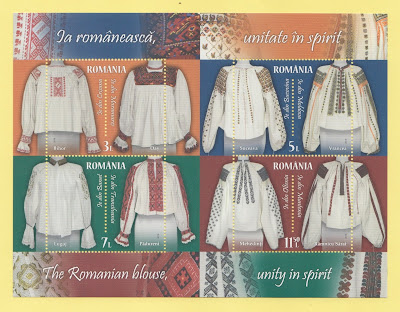Technical Details:
Date of Issue: 07 March 2015
Subject: Localities Armories
Width: 27.5 mm
Height: 23.0 mm
Layout/Format: Sheet of 50
Perforations: 14.5 by 14
Printer: Printing House Nova Imprim Chisinau Moldova
Stamp Designer: Nicolae Sîrbu
Stamp issuing authority: Ministére de la technologie de l’information et des communications Republique de Moldova
The first six values of a definitive series devoted to the coats of arms of country's major cities.
0.10 Moldovan Bani - Armory of Căușeni (Print Run: 1,000,000)
0.25 Moldovan Bani - Armory of Hîncești (Print Run: 500,000)
1.00 Moldovan Leu - Armory of Ungheni (Print Run: 500,000)
1.20 Moldovan Leu - Armory of Orhei (Print Run: 600,000)
3.00 Moldovan Leu - Armory of Bălți (Print Run: 300,000)
5.00 Moldovan Leu - Armory of Chișinău (Print Run: 300,000)
Subject: Localities Armories
Width: 27.5 mm
Height: 23.0 mm
Layout/Format: Sheet of 50
Perforations: 14.5 by 14
Printer: Printing House Nova Imprim Chisinau Moldova
Stamp Designer: Nicolae Sîrbu
Stamp issuing authority: Ministére de la technologie de l’information et des communications Republique de Moldova
The first six values of a definitive series devoted to the coats of arms of country's major cities.
0.10 Moldovan Bani - Armory of Căușeni (Print Run: 1,000,000)
0.25 Moldovan Bani - Armory of Hîncești (Print Run: 500,000)
1.00 Moldovan Leu - Armory of Ungheni (Print Run: 500,000)
1.20 Moldovan Leu - Armory of Orhei (Print Run: 600,000)
3.00 Moldovan Leu - Armory of Bălți (Print Run: 300,000)
5.00 Moldovan Leu - Armory of Chișinău (Print Run: 300,000)













